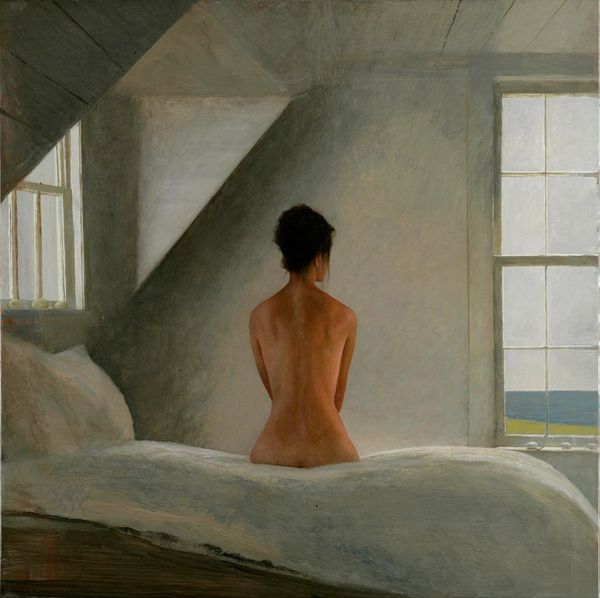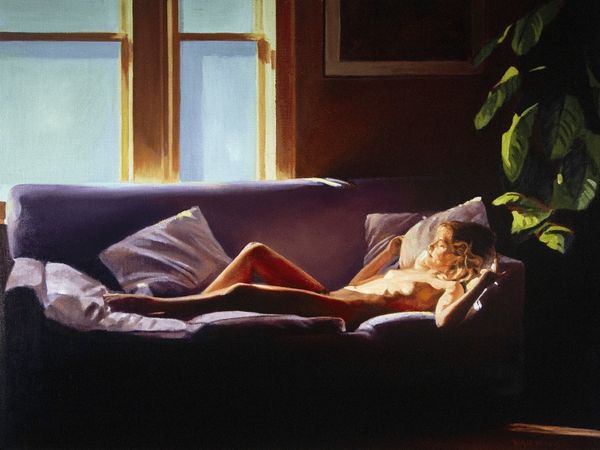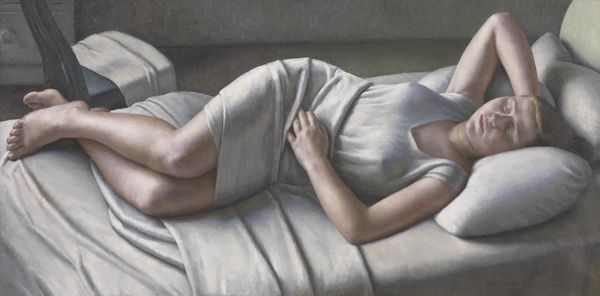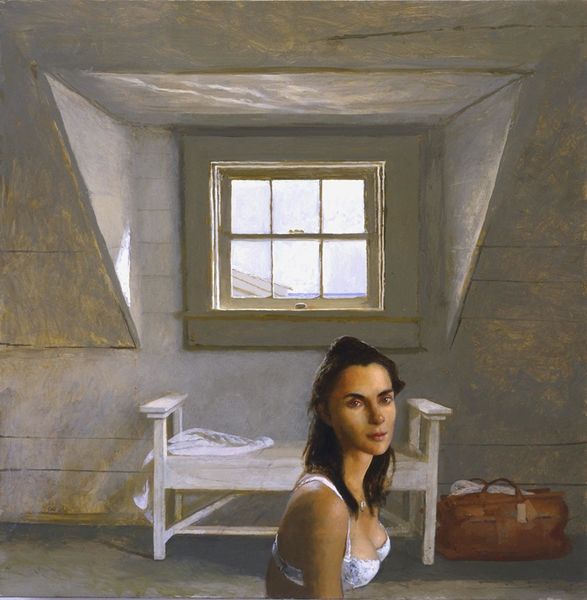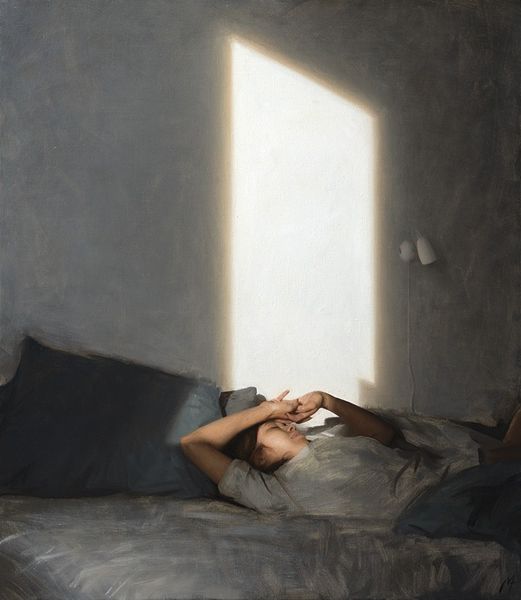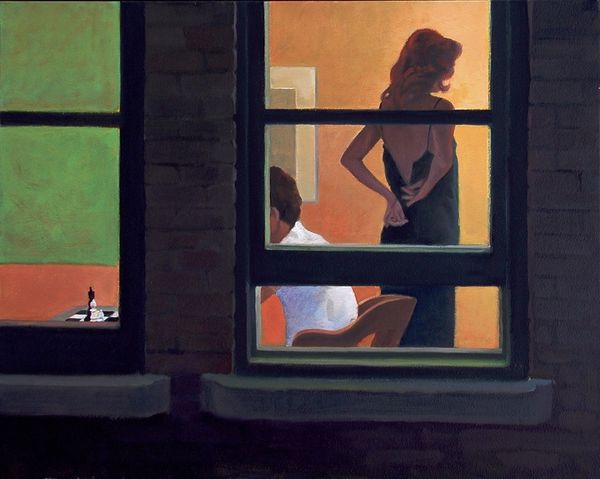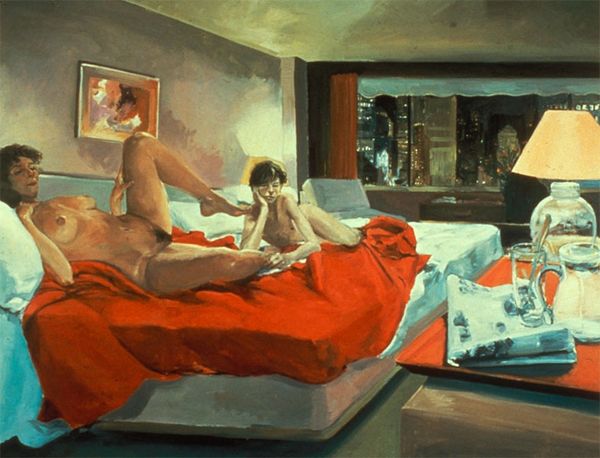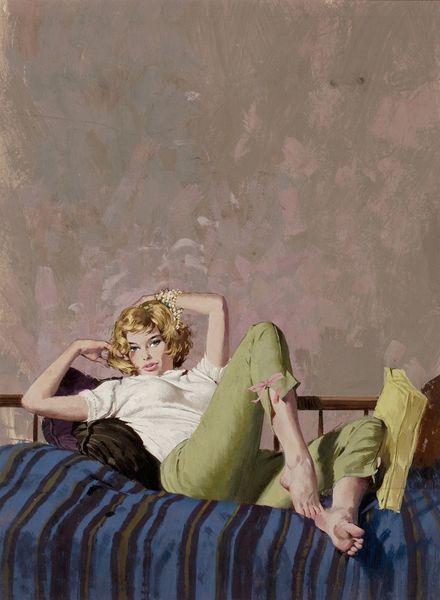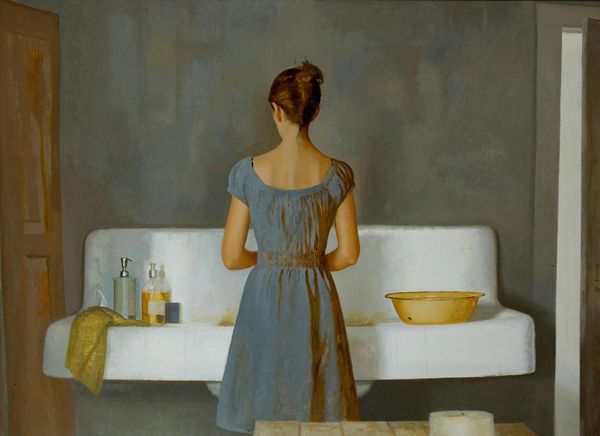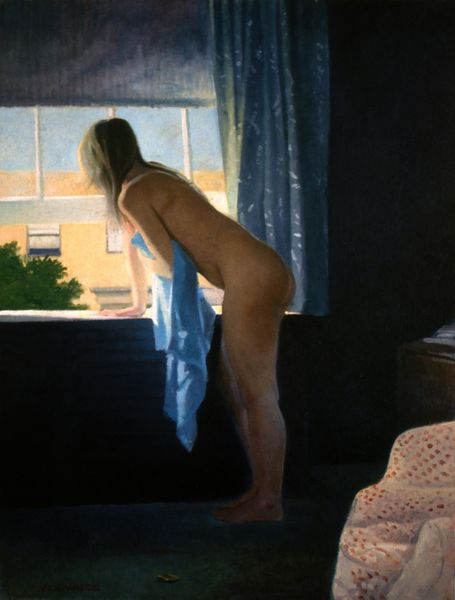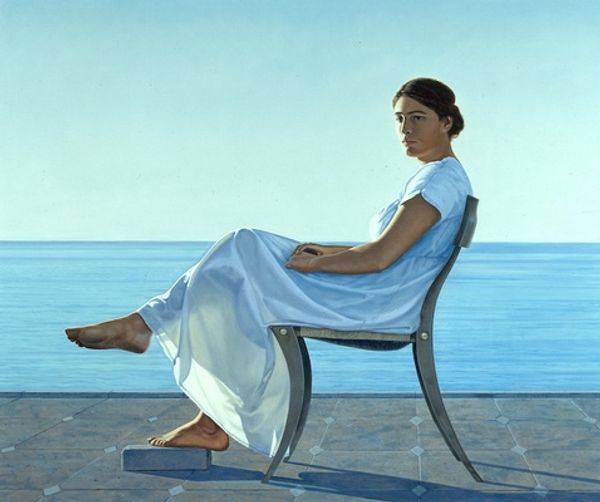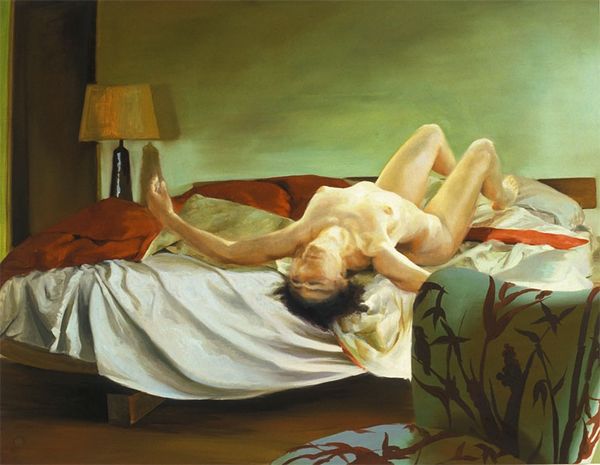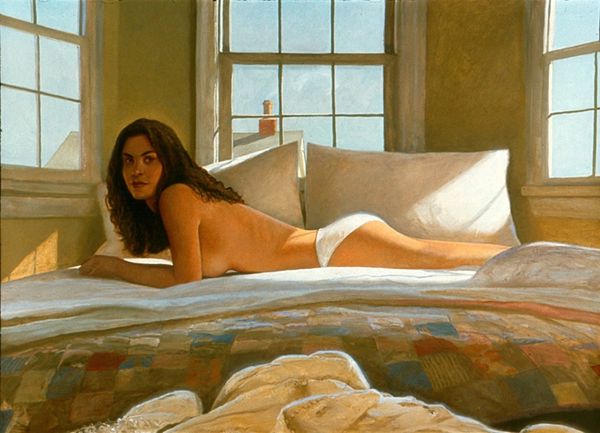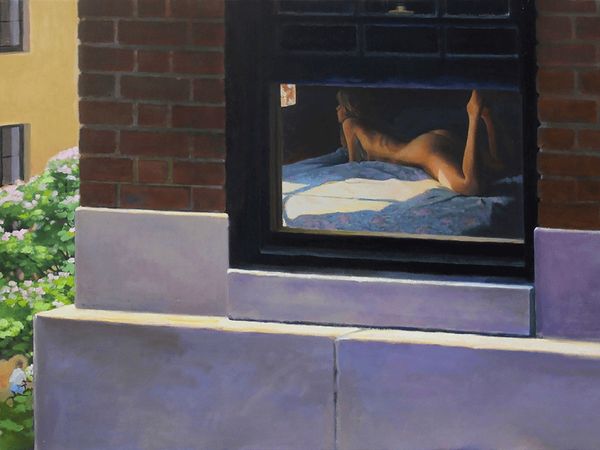
painting, oil-paint
#
portrait
#
narrative-art
#
painting
#
oil-paint
#
landscape
#
cityscape
#
modernism
#
realism
Dimensions: 101.98 x 71.5 cm
Copyright: Edward Hopper,Fair Use
Curator: Edward Hopper's "Morning Sun," painted in 1952 and now residing at the Columbus Museum of Art, presents a fascinating tableau. Editor: My initial reaction is one of stark isolation, punctuated by that brutal, almost clinical light flooding the room. There's a voyeuristic feel to the whole thing. Curator: Indeed. Hopper often explored themes of urban loneliness. Consider the very deliberate brushstrokes: the flatness of the wall contrasting with the defined geometry of the window frame. Hopper meticulously built his compositions, much like stage sets. How does this relate to contemporary debates regarding art and commodity? Editor: I’m thinking about how this plays into broader narratives. Hopper's choice of subject matter - an anonymous woman seemingly trapped between the domestic sphere and the encroaching urban landscape – is interesting in terms of art’s institutional role in reflecting, or even shaping, societal norms about women. How were paintings of this nature regarded and marketed at the time? Curator: Excellent point. Museums displayed these works within the framework of American Realism, promoting ideals of objectivity. Consider also, however, the oil paints he employed. Their mass production reflects the boom of the post-war economy, affecting accessibility, availability, and ultimately, artistic creation. The artwork in question becomes, by extension, both art and consumer item. Editor: And even the window functions almost as a framed image within the image. The way it both reveals and confines the external world is visually interesting when looking at the history of how galleries do the same. It influences how we, as the audience, perceive the external environment. Curator: Absolutely. The way the internal and external blend gives it such strength. "Morning Sun" highlights his profound awareness of social realities while examining the fundamentals of the painted form. Editor: Right. It really emphasizes the crucial connections between the museum, the studio, and the broader socioeconomic picture. Hopper provokes viewers to not only witness the woman’s circumstance but consider the larger system shaping these instances.
Comments
No comments
Be the first to comment and join the conversation on the ultimate creative platform.
